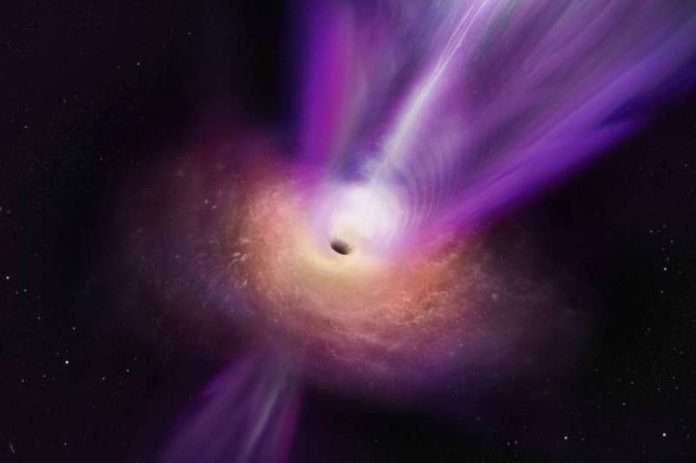Scientists have revealed new images of a black hole that are the first to show the violent events that take place around one of these cosmic phenomena, as they show the massive emanation of high-energy particles into space.
Scientists obtained the new images, which are among the first to capture black holes, using 16 telescopes at different locations on Earth that together formed a planet-sized observing dish, reports Al-Rai daily.
The supermassive black hole photographed is located at the center of a relatively nearby galaxy, Messier 87, or M87, approximately 54 million light-years from Earth.
The black hole itself, which has a mass of 6.5 billion times the mass of our sun, also appeared in the first ever image of this cosmic phenomenon, an image that was unveiled in 2019. It also picked up one for another black hole last year.
It shows only the black hole’s darkness and a ring of bright material surrounding it. The new images all come from observations made using many radio telescopes around the world.
But the newer image shows light being emitted at a longer wavelength, which broadens what can be seen. Black holes are difficult to spot by their very nature, as they are an entity with such an enormous pull that no matter or even light can escape from them once they fall into their gravitational pull.
Supermassive black holes are found in the centers of most galaxies. Some not only devour any surrounding matter, but also shoot huge, blazing jets of high-energy particles far into space.
The new images show how the base of these jets connects with the material that orbits the black hole in a ring-like formation.
“The images show for the first time the connection between the flow of … (the material drawn in) near the supermassive black hole and a source,” said astrophysicist Ru Sen Lu of the Chinese Academy of Sciences in Shanghai, who is the principal investigator on the study published in the journal Nature. emanation.”
In turn, astrophysicist Thomas Kretschbaum, co-author of the study, from the Max Planck Institute for Radiation Astronomy in Germany, stated, “This helps in a better understanding of the complex physics related to black holes, how the jets are launched and accelerated, and how the matter flowing into the black hole is related to that.” emanating from it.”
“This is what astronomers and astrophysicists have been waiting to see for more than half a century,” said astrophysicist Kazunori Akiyama of MIT’s Haystack Observatory, also co-author of the study. “It’s the dawn of an exciting new age.”
The three scientists are members of the Event Horizon Telescope project, an international collaboration that began in 2012 with the goal of observing the environment directly around black holes.

















